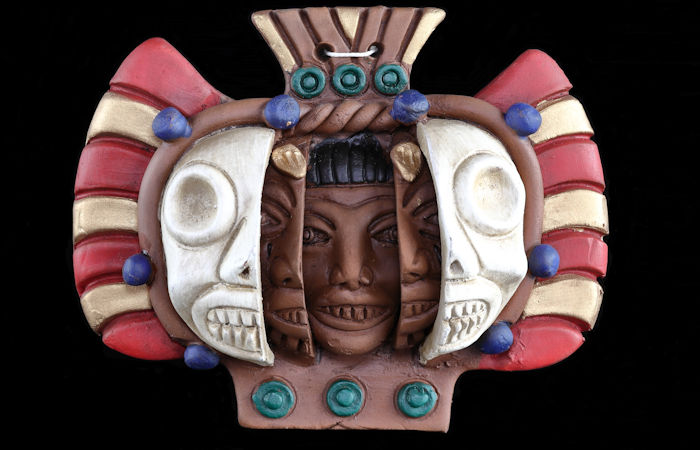Supay: God Of Death And Underworld And Ruler Over Race Of Demons According To Inca Beliefs
A. Sutherland - AncientPages.com - In the Inca and Aymara mythologies, Supay ('Andean Devil') was both the god of death and powerful ruler of the Incan underworld Ukhu Pacha (Uku Pacha), as well as a race of demons.
Unlike Europeans, the indigenous people did not reject Supay. They were so afraid of him that they invoked him and begged him not to harm them. Credit: Adobe Stock - JIT
Supay was responsible for balancing good and evil.
Supay is listed as one of the most wicked gods. He was the one who protected the path of the dead. The Incas believed that death was a new beginning with the Inca gods. Despite this pessimistic view, many Inca people worshiped him because they believed in his power to grant them favors through offerings and rituals.
He was depicted as a figure resembling demons (jaguar head, longhorns, wise eyes, puma body, and sharp teeth). Supay was a shapeshifter that could surprise by taking the form of an Inca woman or a handsome Inca man; in the same way, he could transform into any animal he wanted.
The domain of Supay was located in the deep earth, and his underworld is also known as the "inner world" or "below the world." Therefore, as the god of minerals, Supay was worshipped by miners. Today, his worship is still alive among Andean miners and excavators.
According to Inca mythology, the god Supay's underground realm was Ukhu Pacha (Uku Pacha), one of three realms (or 'Pacha') that divides the cosmos.
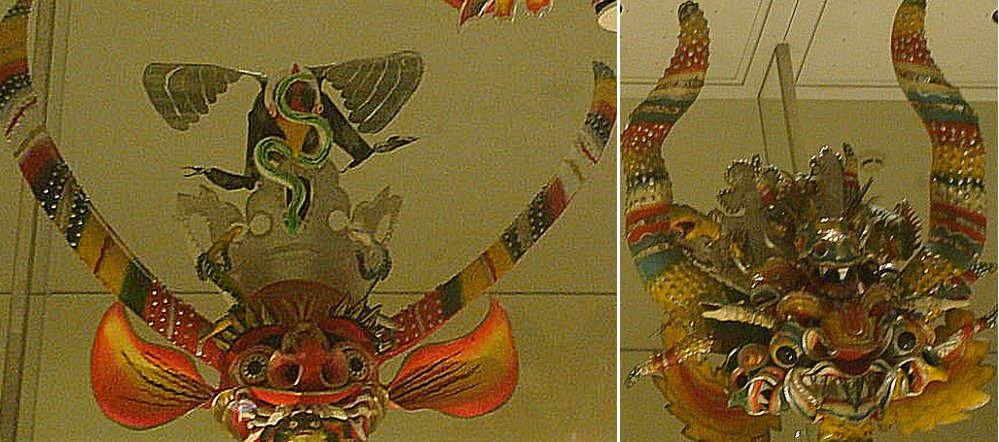 Left: 18th-century painting of the Danza de Los diablos de Túcume, region of Túcume, Peru. source Right: Different models of Diablada masks in an exhibition in the British Museum. source
Left: 18th-century painting of the Danza de Los diablos de Túcume, region of Túcume, Peru. source Right: Different models of Diablada masks in an exhibition in the British Museum. source
Two other realms are Hanan Pacha and Kay Pacha, which along with Ukhu Pacha, resemble Catholic beliefs in the earth, heaven, and hell, a concept also known in other religions.
Chronicler and writer Garcilaso de la Vega (1539 – 1616) was a son of a Spanish conquistador and an Inca noblewoman born in the early years of the conquest. He was widely recognized for his histories of Inca history, culture, and society. The chronicler Vega characterized Supay's Uku Pacha as an underworld, a place of pain and suffering.
The wicked were sent to the 'lowest earth, the so-called 'house of the devil.'
However, the Uku Pacha underworld was not considered a negative concept. Incas regarded the place's subterranean water as life-sustaining springs, which link the human realm with the inner world.
In his 'Handbook of Inca Mythology,' Paul Steele says that Uku Pacha was linked to 'the feminine earth mother and the bones of the ancestors.'
When the Spaniards colonized the Americas, Christian priests called the Christian Devil 'Supay.' Unlike Europeans, the indigenous people accepted Supay. They were so afraid of him that they invoked him and begged him not to harm them.
Today, the ancient symbolism of this terrifying mythological figure, ' diablo,' has been replaced with another practice.
This new tradition makes Supay the main character in the 'Diablada' carnival, a part of the cultural traditions in Bolivia, Chile, Peru, and other Andean countries.
The Diablada (or 'Danza de Los Diablos,' which means 'Dance of the Devils') is a popular dance characterized by the mask and devil suit worn by the performers.
The Spaniards destroyed the Incan empire and took control over the country, yet the ancient belief in Supay lives in indigenous Peruvians' daily lives. The Catholic Church became the dominant religious power in Peru, and the word 'Supay' applies to the Devil.
Written by – A. Sutherland - AncientPages.com Senior Staff Writer
Updated on March 8, 2023
Copyright © AncientPages.com All rights reserved. This material may not be published, broadcast, rewritten or redistributed in whole or part without the express written permission of AncientPages.com
Expand for referencesReferences:
Klauser William., The Esoteric Codex: Deities of the Underworld
Steele P., Handbook of Inca Mythology
More From Ancient Pages
-
 Man Finds Fascinating Mythical Treasure And Dies Under Mysterious Circumstances – Or Did Something Else Happen?
Featured Stories | Jan 26, 2025
Man Finds Fascinating Mythical Treasure And Dies Under Mysterious Circumstances – Or Did Something Else Happen?
Featured Stories | Jan 26, 2025 -
 1,000 Ancient Sealings Linked To Graeco-Roman Pantheon Among Finds In Unidentified Church In Turkey
Archaeology | Dec 12, 2017
1,000 Ancient Sealings Linked To Graeco-Roman Pantheon Among Finds In Unidentified Church In Turkey
Archaeology | Dec 12, 2017 -
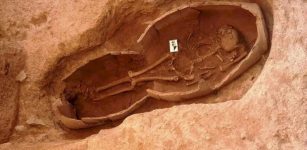 Parthian Jar Burial Dated To 247 BC – 224 CE Unearthed In Iran’s Kurdistan Province
Archaeology | Sep 29, 2020
Parthian Jar Burial Dated To 247 BC – 224 CE Unearthed In Iran’s Kurdistan Province
Archaeology | Sep 29, 2020 -
 Virtual Nubia: Sudan’s Medieval Monasteries Digitally Reconstructed By Polish Archaeologists
News | Oct 8, 2020
Virtual Nubia: Sudan’s Medieval Monasteries Digitally Reconstructed By Polish Archaeologists
News | Oct 8, 2020 -
 Mysterious Ancient European Civilization – Puzzling Ancient Egyptian Connection – Part 2
Ancient Mysteries | Oct 23, 2019
Mysterious Ancient European Civilization – Puzzling Ancient Egyptian Connection – Part 2
Ancient Mysteries | Oct 23, 2019 -
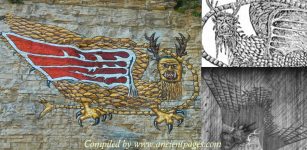 Mysterious Piasa Bird – Native American Dragon That Existed Thousands Of Moons Before The Pale Face Came
Featured Stories | Jan 1, 2018
Mysterious Piasa Bird – Native American Dragon That Existed Thousands Of Moons Before The Pale Face Came
Featured Stories | Jan 1, 2018 -
 On This Day In History: Johannes Kepler ‘Father Of Modern Astronomy’ Was Born – On Dec 27, 1571
News | Dec 27, 2016
On This Day In History: Johannes Kepler ‘Father Of Modern Astronomy’ Was Born – On Dec 27, 1571
News | Dec 27, 2016 -
 Mythical Submerged City Of Ys – Europe’s Own Sodom And Gomorrah
Featured Stories | Feb 1, 2023
Mythical Submerged City Of Ys – Europe’s Own Sodom And Gomorrah
Featured Stories | Feb 1, 2023 -
 On This Day In History: Soviet Spacecraft Venera 7 Launched: First To Send Data From Venus To Earth – On Aug 17, 1970
News | Aug 17, 2016
On This Day In History: Soviet Spacecraft Venera 7 Launched: First To Send Data From Venus To Earth – On Aug 17, 1970
News | Aug 17, 2016 -
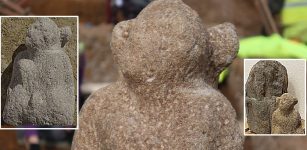 Roman-Germanic Mythical Kneeling Figure With A Human Head And Snake’s Body Unearthed At Stuttgart’s Excavation Site
Artifacts | Apr 24, 2024
Roman-Germanic Mythical Kneeling Figure With A Human Head And Snake’s Body Unearthed At Stuttgart’s Excavation Site
Artifacts | Apr 24, 2024 -
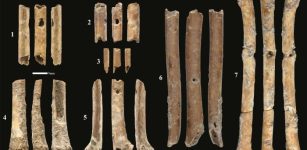 12,000-Year-Old Flutes Made From Bird Bones – Discovered
Archaeology | Jun 10, 2023
12,000-Year-Old Flutes Made From Bird Bones – Discovered
Archaeology | Jun 10, 2023 -
 Long-Lost Legendary Ancient Temple Discovered On San Miguel Hill In Mexico
Archaeology | Oct 20, 2023
Long-Lost Legendary Ancient Temple Discovered On San Miguel Hill In Mexico
Archaeology | Oct 20, 2023 -
 Native Americans’ Visions Of Distant Explorers May Unravel Some Ancient Mysteries Of North America – The Arrival – Part 1
Ancient Mysteries | Nov 19, 2019
Native Americans’ Visions Of Distant Explorers May Unravel Some Ancient Mysteries Of North America – The Arrival – Part 1
Ancient Mysteries | Nov 19, 2019 -
 Unexpected Discovery 130,000-Year-Old Neanderthal Stone Tools In Poland
Archaeology | Oct 30, 2023
Unexpected Discovery 130,000-Year-Old Neanderthal Stone Tools In Poland
Archaeology | Oct 30, 2023 -
 On This Day In History: Great Siege Of Gibraltar Begins – On June 16, 1779
News | Jun 16, 2016
On This Day In History: Great Siege Of Gibraltar Begins – On June 16, 1779
News | Jun 16, 2016 -
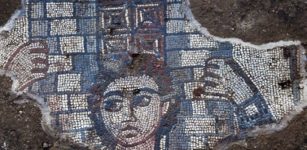 Mosaics Discovered In Ancient Galilean Jewish Village
Archaeology | Jul 10, 2018
Mosaics Discovered In Ancient Galilean Jewish Village
Archaeology | Jul 10, 2018 -
 Controversial Sand Mounds In Australia Are 6,000 Years Old Man-Made Burial Mounds – Radar Scans Reveal
Archaeology | Feb 10, 2018
Controversial Sand Mounds In Australia Are 6,000 Years Old Man-Made Burial Mounds – Radar Scans Reveal
Archaeology | Feb 10, 2018 -
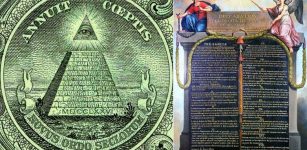 Eye Of Providence – Powerful, Secret Symbol With Deep Meaning
Ancient Symbols | Feb 13, 2018
Eye Of Providence – Powerful, Secret Symbol With Deep Meaning
Ancient Symbols | Feb 13, 2018 -
 Four Canopic Jars Dated To The 26th Dynasty Unearthed At South Asasif Necropolis, Luxor
Archaeology | Jun 27, 2018
Four Canopic Jars Dated To The 26th Dynasty Unearthed At South Asasif Necropolis, Luxor
Archaeology | Jun 27, 2018 -
 Why Did Ancient Romans Destroy The Town Of Fregellae?
Archaeology | Oct 14, 2024
Why Did Ancient Romans Destroy The Town Of Fregellae?
Archaeology | Oct 14, 2024

